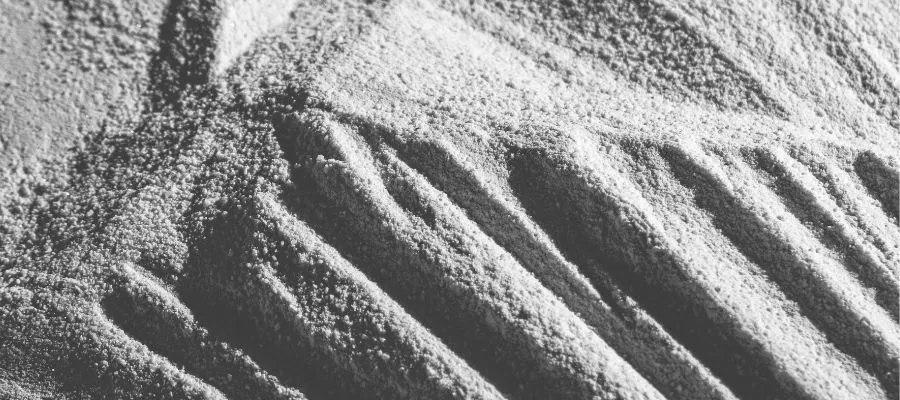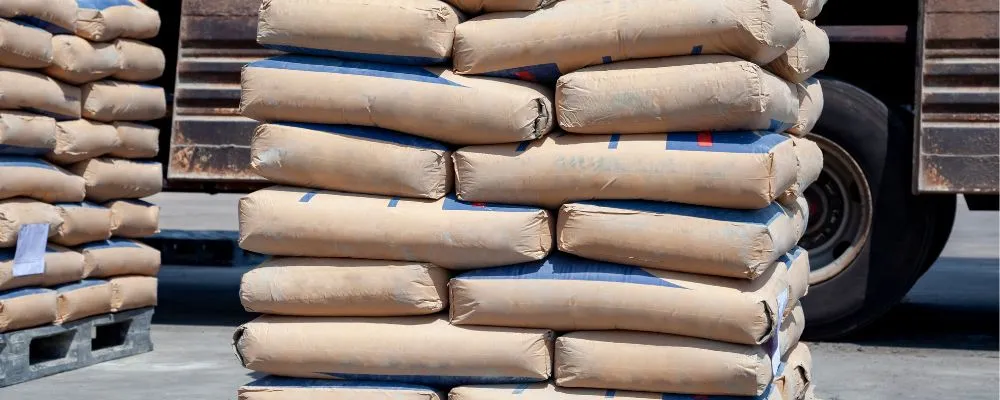When building a home, the type of cement you use is very important. There are many choices, but Portland Pozzolana Cement (PPC) stands out as a useful and flexible one. In this blog Brick & Bolt, we look into the ins and outs of PPC, including what it is made of, its benefits, and how it helps build homes that last.
What is Portland Pozzolana Cement(PPC)?

PPC, which stands for Portland Pozzolana Cement, is a type of cement that is frequently utilized in the building sector due to its exceptional qualities and benefits. The performance and sustainability of this material are improved by the addition of pozzolanic materials and Portland cement clinker, which are both components of this mixture.
What is the classification of PPC Cement?
Portland Pozzolana Cement (PPC) is put into groups mainly based on what it is made of and how well it works, as described by appropriate standards and guidelines. PPC is categorized by state standards in many places, like India. These standards could be the Indian Standard (IS) or the American Society for Testing and Materials (ASTM) standards. Here is an outline of how PPC is categorised:
1. Based on Pozzolanic Material Present:
Type I:
PPC with a low to moderate amount of pozzolanic material present, usually between 10% and 25% by mass. This kind of PPC develops moderately in strength and can be used for a wide range of building tasks.
Type II:
PPC with a higher pozzolanic material content, usually between 25% and 40% by mass. Type II PPC develops stronger and lasts longer, so it can be used for building concrete and infrastructure projects that need better performance.
2. Based on Compressive Strength:
Grade 33:
PPC with a minimum compressive strength of 33 MPa (Megapascals) after 28 days. Most of the time, Grade 33 PPC is used for general building and non-structural uses.
Grade 43:
PPC that has a minimum compression strength of 43 MPa after 28 days. It is possible to use Grade 43 PPC for structural concrete parts like beams, columns, and blocks that need to be stronger.
Grade 53:
PPC that has a compression strength of at least 53 MPa after 28 days. Grade 53 PPC is used for high-strength concrete projects like bridges, marine structures, and precast parts.
3. Based on Setting Time:
PPC can also be put into groups based on when it was set up, including when it was first set up and when it was last set up. The required setting time is given to make sure that the cement has the right workability and strength development characteristics for the building.
4. Based on Chemical Composition:
Some types of PPC may also look at the cement’s chemical makeup, such as the amount of Portland cement clinker, pozzolanic materials, and other ingredients that are in it. These requirements help make sure that the quality and performance of PPC are always the same in different situations.
It is important to keep in mind that the way PPC is classified may be different in different countries and areas, depending on their own rules and standards. To choose the right type and grade of PPC for their projects, builders and contractors should look at the important standards and specifications. Following classification standards also makes sure that the quality, performance, and dependability of PPC in building applications.
Composition of PPC:
Portland Pozzolana Cement is made up of a mix of Portland cement clinker and pozzolanic materials that work well together.
Portland Cement Clinker:
Portland cement clinker functions as the principal component of Portland cement cement (PPC). Cement clinker is formed by grinding a mixture of limestone, clay, and other minerals in a kiln at high temperatures. This process is known as the Portland cement production process. In addition to providing the initial strength and binding capabilities of PPC, it is the foundation upon which the majority of cement types are built.
Pozzolanic Materials:
The combination of pozzolanic materials is the characteristic that sets PPC apart from other materials. These components, which may include fly ash, calcined clay, or volcanic ash, are crushed to a very fine quality before being incorporated into the cement mixture. In the presence of water, pozzolanic materials undergo a chemical reaction with calcium hydroxide, which results in the formation of additional cementitious compounds. In addition to improving the cement’s strength and durability, this reaction, which is referred to as the pozzolanic reaction, also provides additional benefits.
Advantages of Portland Pozzolana Cement
Portland Pozzolana Cement (PPC) has become a popular choice in the building business, because it has so many benefits. In this section, we’ll talk about the main reasons why PPC is an important part of home building projects.
1. Better Strength and Durability:
Compared to regular Portland cement, PPC is stronger and lasts longer. The addition of pozzolanic materials makes it easier for more cementitious compounds to form. This makes the concrete stronger and better able to handle things like chemical attacks, sulfate exposure, and rust. Structures made with PPC are more likely to last for a long time and be reliable.
2. Lower Heat of Hydration:
One thing that makes PPC stand out is that it has a lower heat of hydration. PPC produces less heat during the hydration process than regular Portland cement. This makes it useful in situations where differences in temperature can cause thermal cracking, like in big concrete structures. This feature of PPC makes the construction last longer and more durable.
3. Improved Workability:
The smaller pozzolanic materials in PPC make it easier to work with because they are contained in the cement mix. This better workability means that it is easier to move, mix, place, and pack down concrete during building. So, builders can make their buildings look better and have smoother finishes while also cutting down on the time it takes to build and the amount of work that needs to be done.
4. Resistance to Sulfate Attack:
Structures that are built in sulfate-rich areas, like coastal areas or places where the dirt has a lot of sulfate in it, need cement that is more resistant to sulfate attack. PPC makes the structure more resistant to sulfate attack, which lowers the risk of damage and makes sure it lasts longer. Because of this, PPC is a great choice for building jobs that need to be done in tough environments.
5. Lower Carbon Footprint:
Less carbon dioxide is released into the atmosphere when pozzolanic materials are used to make PPC. This helps lower the carbon footprint of making cement. By using industrial waste like fly ash or calcined clay, PPC helps reduce the damage that making cement does to the earth and encourages green building methods. This makes PPC a good choice for builders and producers who care about the environment.
6. Cost-Effectiveness:
Even though PPC works better and has more benefits, it is still cheaper than other types of cement. Pozzolanic materials are often cheaper than other types of cement because they are made from waste materials in factories. Additionally, structures made with PPC last longer and need less upkeep, which lowers the overall cost of the construction project over its entire lifecycle.
In conclusion, Portland Pozzolana Cement (PPC) has many benefits that make it a popular choice for building homes. PPC offers better performance at a lower cost, with benefits like increased strength and durability, easier workability, and sustainability. By using PPC’s benefits, builders can create strong, long-lasting structures that meet the needs of modern building practices and help with sustainable development.

